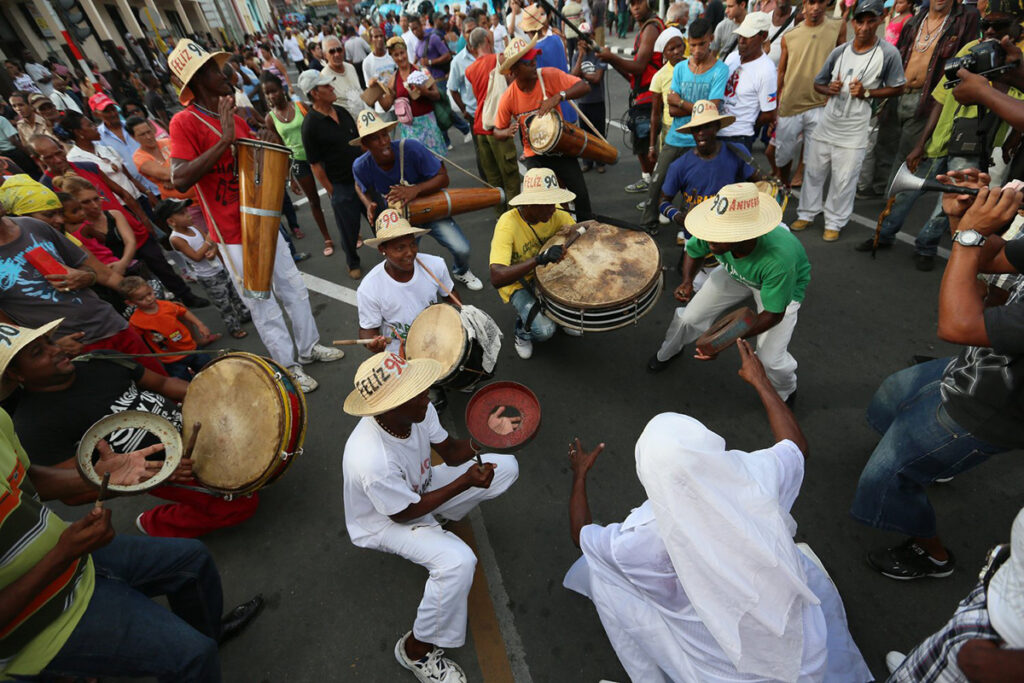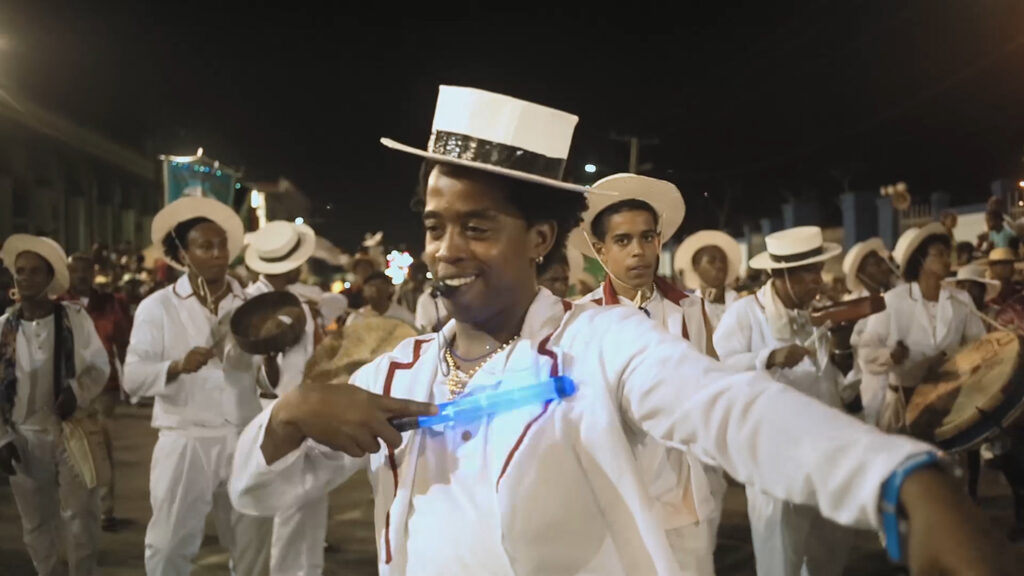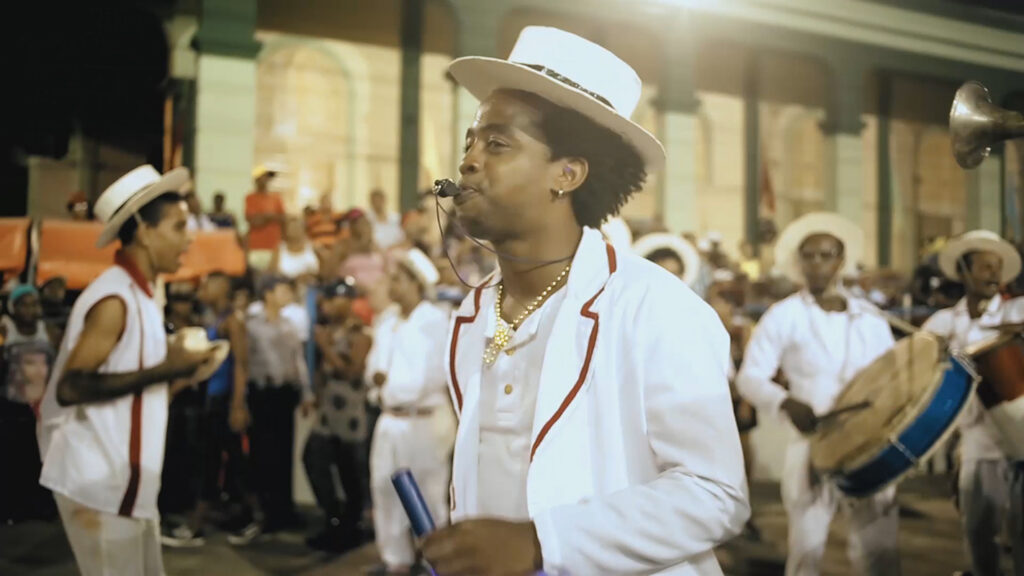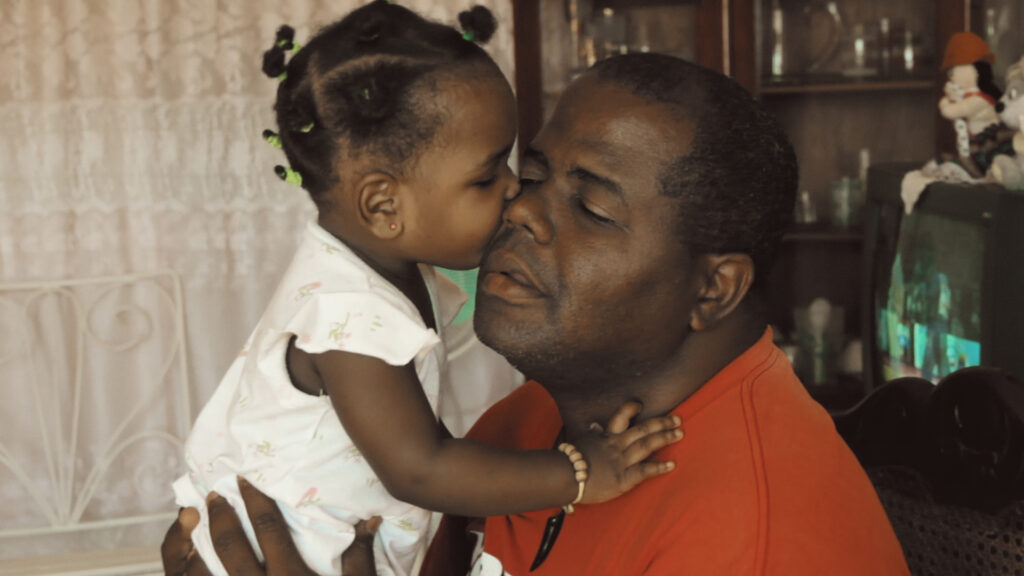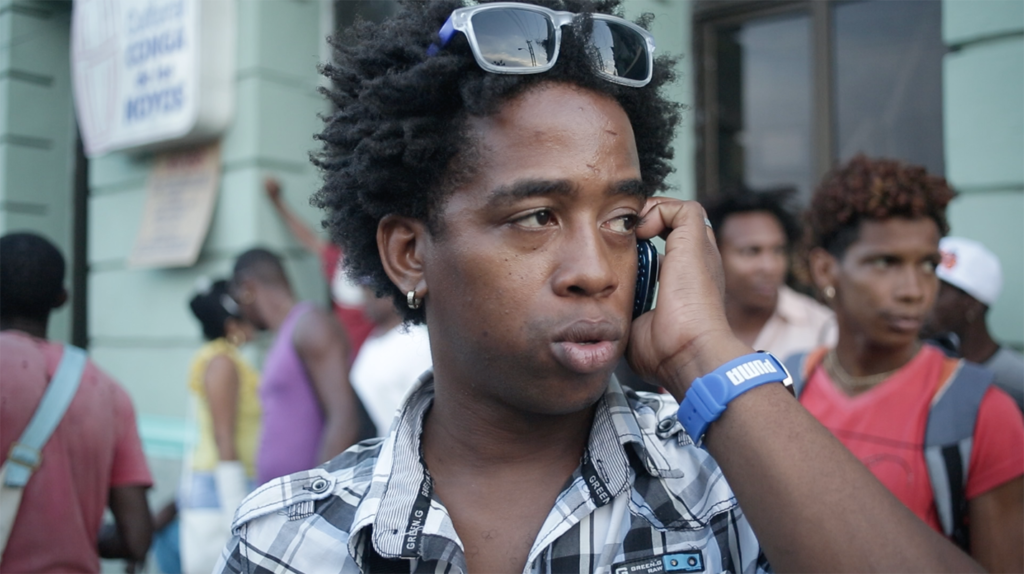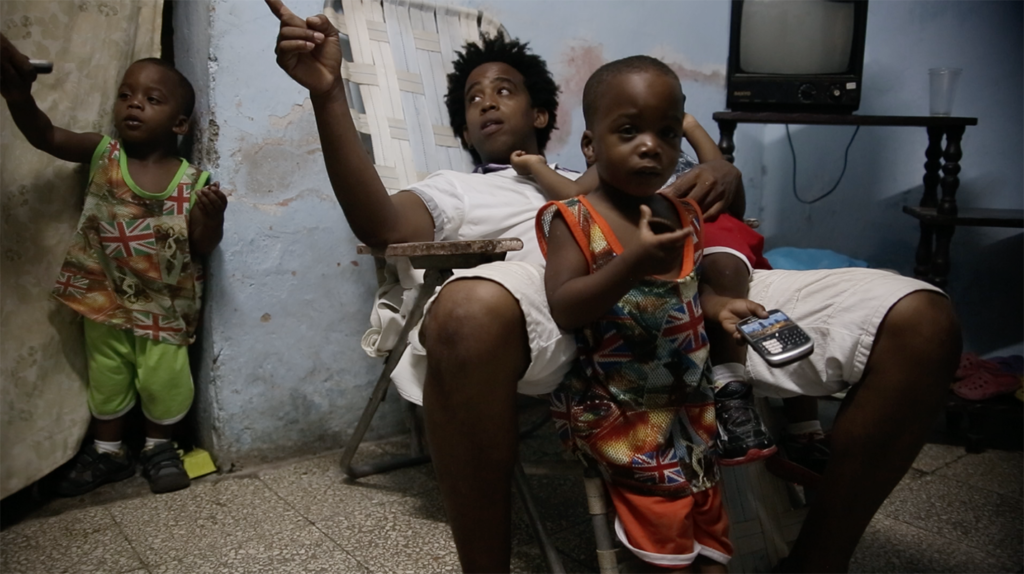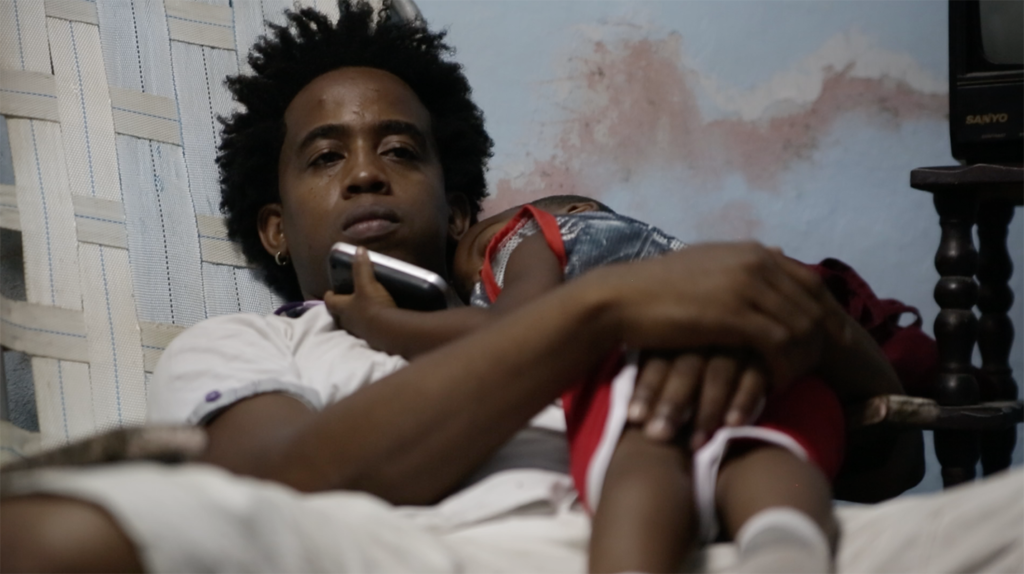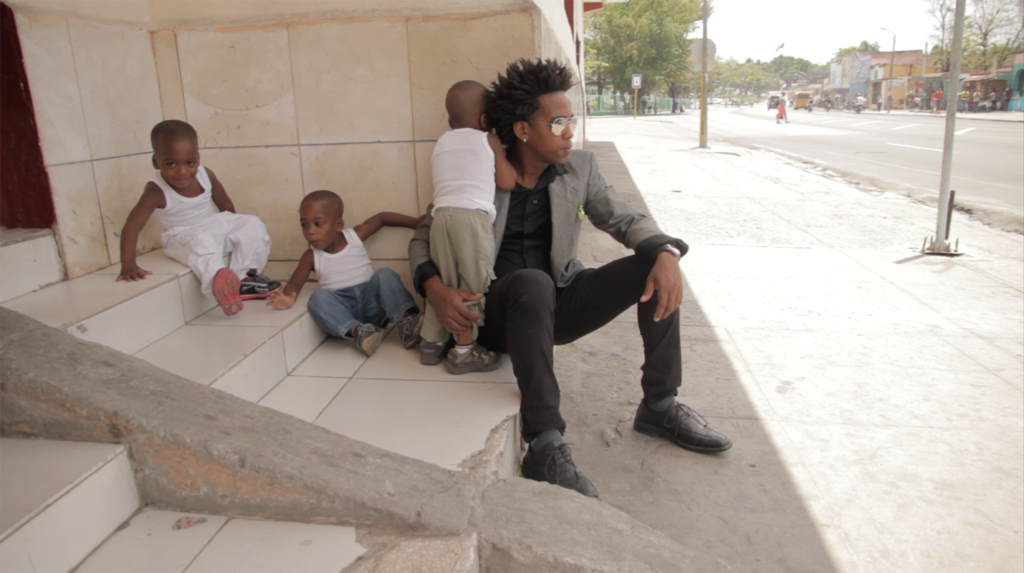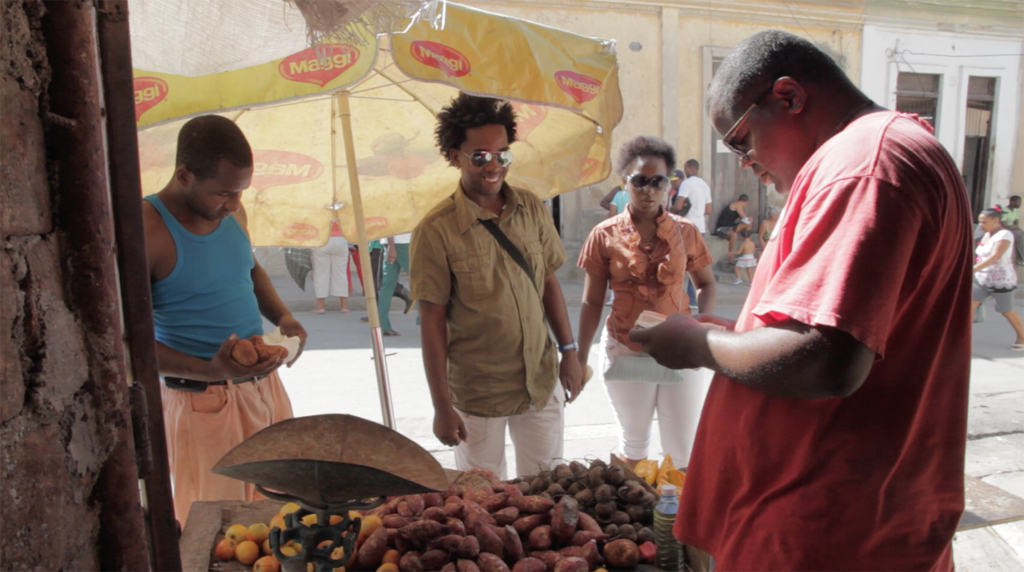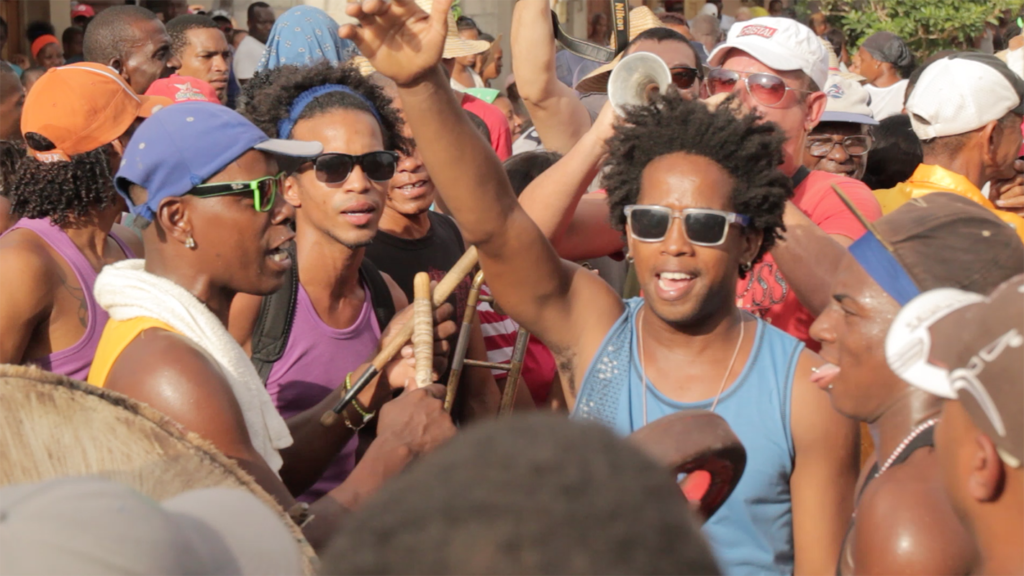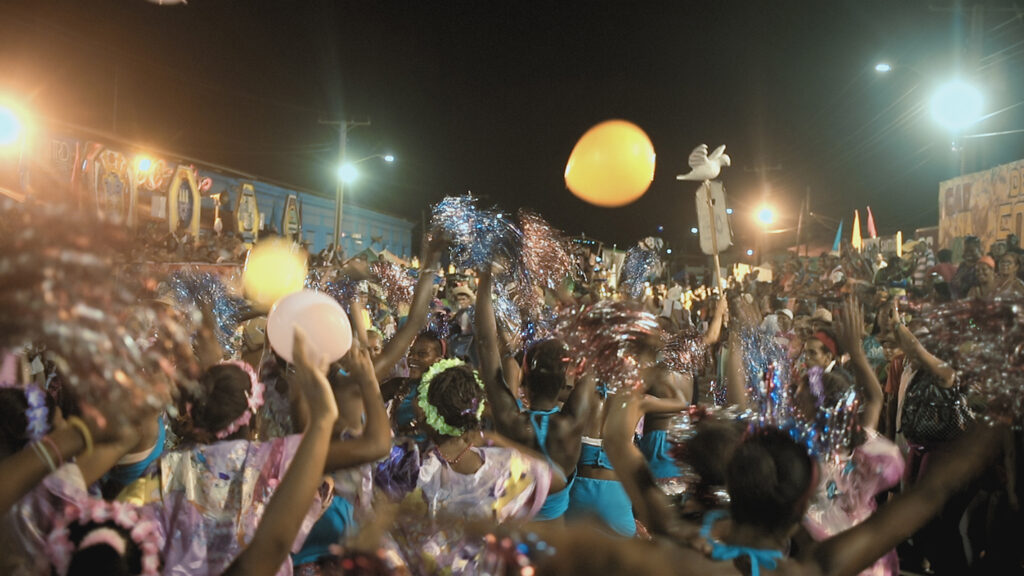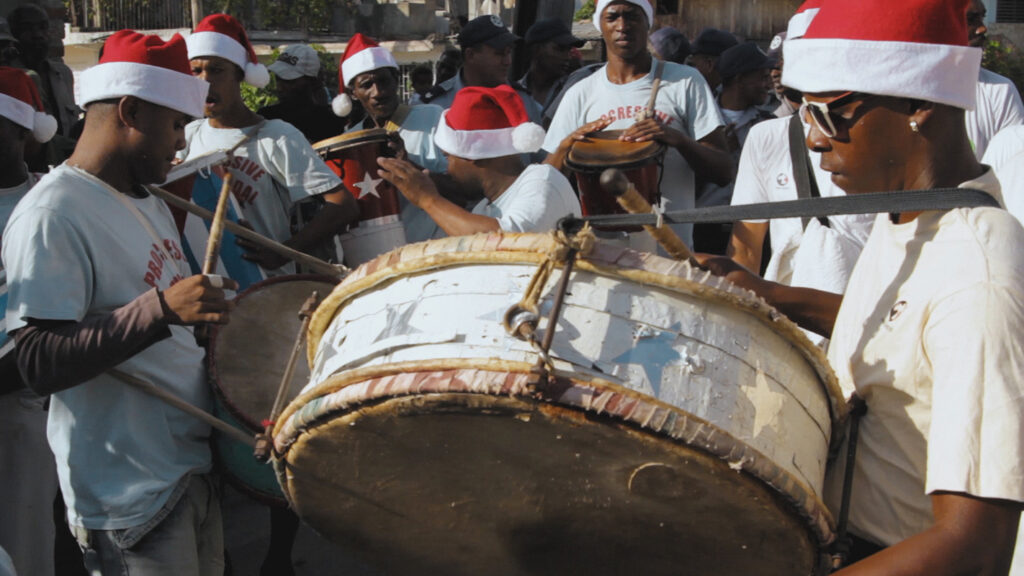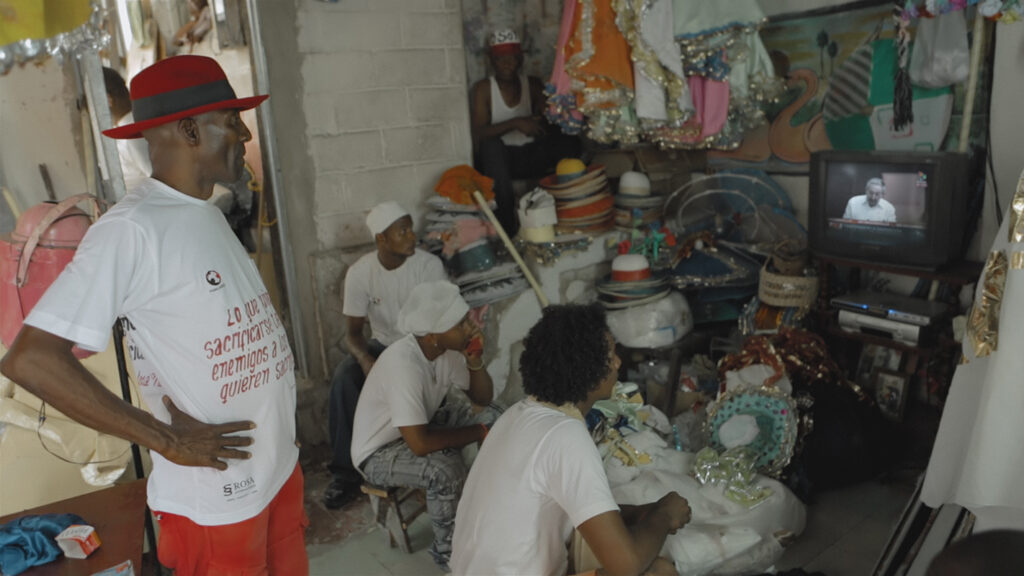At long last, after more than 15 years in the making between Santiago de Cuba, New Orleans, Louisiana, and Havana, Saturday evening, November 12 saw the sold-out, in-person world premiere of the heartbreakingly beautiful documentary film “Lázaro and the Shark: Cuba under the Surface” at Chelsea’s newly refurbished Cinépolis Theater in the still-beating heart of Manhattan.
Part of the rich line-up of the 2022 DOCNYC festival, this character-driven, feature-length documentary―made by an international team led by director and head cinematographer William Sabourin O’Reilly―is ostensibly about the annual carnival competitions that take place among the many, storied neighborhood Conga troupes of Cuba’s second city, Santiago―home to the country’s largest concentration of Afro-Cubans.
But the film is really about the struggle for bodily survival, human dignity, and autonomous creative expression in the face of chronic economic and material scarcity, government control and repression, and the intensifying siren song that draws ever more Cubans to opt for the promise of a better life abroad.
*
As such, Sabourin (a native of Havana who makes his home in New Orleans) grants us inside access to the immensely resourceful and endlessly creative year-long preparations undertaken by Conga San Agustín and its wily veteran party-line leader Raúl López, aka “El Tiburón” (The Shark), and their cross-city arch-rivals, the legendary Conga de los Hoyos led by the youthful, upstart Conga “chief” Lázaro Banderas.
Along the way, we learn that The Shark left behind a life of petty crime to embrace the Revolution and become San Agustín’s sometimes-authoritarian head honcho. Lázaro, by contrast, juggles his role as Los Hoyos’ driven yet fun-loving leader together with the enormous responsibilities attendant to a new father of triplets whose young physician wife is absent, serving a three-year stint on a medical mission in Venezuela.
Truth is indeed stranger than fiction.
*
Along the way, we also meet the two other men who round out the film’s dynamic quartet of protagonists: Rubíester “El Poeta” Porte and Antonio “Ñico” Hung.
Referred to as “The Poet” based on his talent for dreaming up catchy and devastatingly humorous Conga chants (which are then loudly intoned by hundreds of ecstatic paraders), throughout the film Porte struggles with a harrowing political and existential dilemma: stay or go, fight or flight?
That is, should he continue belting out his often politically provocative if not downright subversive rhymes and risk imprisonment from the humorless repressors, always ready to hem him in? Or should he opt for the freedom of political asylum in the U.S. at the cost of abandoning his loving wife and impressionable young daughter?
The Poet himself is under no illusions about his predicament, explaining it thus in the film: “Of course, I’d miss them. But I’d rather miss them from abroad than be locked up in a prison here! That would only double my suffering.”
Cubans, of course, have the perfect refrain when facing such insoluble dilemmas: “¡Ay, Cuba! ¡No es fácil!” (Oh, Cuba! It sure ain’t easy!)
Or, as the Poet himself explains multiple times in the film: “Canto por no llorar.” (I sing so as not to cry).
*
For his part, the elderly Ñico long ago left Santiago for a relatively free, modest, and quiet (read boring and isolated) life in Miami. However, far from abandoning his homeland or leaving its communitarian traditions behind, he satiates his deep sense of nostalgia by watching home videos of the Conga.
“Whoever hears a Conga and doesn’t laugh out loud and simultaneously feel a pain in their heart,” explains Ñico, “isn’t from Santiago!”
Ñico also feeds his longing by returning to Santiago each July to attend the city’s carnival celebration. He even acts as the chief sponsor of his childhood troupe, La Conga de los Hoyos, arriving to the city loaded down with dancing shoes, t-shirts, costume decorations, and other assorted surprises in an effort to help Lázaro and his troupe win the day.
At the same time, Ñico’s on-camera refusal to speak ill of the Cuban authorities (or share his video of a police beating of Conga revelers with the filmmaker) for fear of losing his ability to ever again visit his homeland, speaks more eloquently about the lack of fundamental freedoms on the island (speech, assembly, etc.) than the missing tape ever could. Indeed, Ñico’s fear of being punished for speaking out― however indirectly―extends into the Cuban diaspora silencing him while living in Miami 30 years after emigrating from the island.
*
Bifurcating the film and throwing an ominous shadow over its dramatic progression, viewers are treated to the colorful sights and thumping sounds of a separate, more localized and free-form tradition: Santiago’s Conga “invasiones.”
These communitarian “invasions” are the Cuban equivalent of New Orleans’ neighborhood “second line” parades. Personally, I have had the distinct pleasure of “takin’ it to the streets” (aka, “arrollando”) in both Santiago and New Orleans trailing behind and cheering on the rag-tag band of musicians who lead such parades.
However, when Sabourin and his resourceful crew go to Santiago to capture the massive ocean of human bodies who sexily sashay down to the city’s streets in proud support and ecstatic celebration of their neighborhood’s Conga, they are able to witness firsthand and capture on film a brutal police beatdown of the leaders of the Conga de los Hoyos own “invasion,” provoked it seems by the Poet’s biting chants critical of government hypocrisy and corruption.
*
Placing the personality-driven, neighborhood rivalry between “Lázaro and the Shark” at the heart of the eponymous documentary also allows Sabourin to accomplish three stealthy feats during the film’s 76 minutes.
First, despite the fact that the filming took place over the course of more than eight years of visits to Santiago (guided by the film’s executive producer and “intellectual author” Santiago native Tomás Montoya―a long-time resident of The Big Easy as well―the film itself neatly follows a single year in the lives of the members of these two rival Conga groups.
As such, the film begins with the devastating defeat of Lázaro’s Los Hoyos troupe at the always-well-connected hands of the perfectly nicknamed Shark. This deft “year-in-the-life” approach effectively creates a palpable tension that pulls the audience in and drives the tale forward toward its dramatic conclusion.
As Lázaro notes in a voice-over, we hear near the start of the film that “When Carnival comes to an end, every year it’s the same thing,” he explains. “The next day, when you wake up you feel an immense sadness, an emptiness, and even more if you have lost.”
“It’s as if your soul has left your body. And this sadness can last for weeks, even months. But then you realize that there’s always next year’s Carnival, even if this year I know I’ll have my work cut out for me!”
*
A second benefit of building the film around a cross-town rivalry between the leaders of two musical “gangs” is that it allows the director to set up a not-so-subtle outsider hero vs. establishment villain dynamic, while simultaneously avoiding any heavy-handed favoritism, final message, or easy moral.
Indeed, each character is afforded respect, portrayed with complexity, and given ample space to explain his own convictions, struggles for survival in a zero-sum context, and strategies of political convenience and even―in the case of The Shark―bald opportunism.
Indeed, the film’s producer Bryan Bailey noted during the emotional Q&A that followed the Saturday premiere in New York that each of the documentary’s main protagonists had already seen the film and were proud that it had represented them both accurately and sympathetically.
*
Third, the frame of the Conga competition and the rich tapestry of personal struggle each of the four protagonists engage in, function as effective vehicles allowing the film to broach a number of Cuba’s most urgent social and political issues that go well beyond the Conga:
- The constant struggle against scarcity as Cuba’s chronic economic crisis spirals out of control;
- Resistance to stepped-up government repression against independent artists, activists, and journalists;
- Challenging the lack of freedom of speech and association even at the level of these traditional neighborhood Conga groups;
- Caught in the tide of a historic human exodus of the young into exile, following the dashed hopes of the Obama thaw and the uncompromising government crackdown that followed the historic, massive outpouring of everyday citizens “takin’ it to the streets” themselves in protest on July 11, 2021.
*
When I asked Sabourin during the Q&A that followed the premiere to share something about what inspired him to make the film, he noted with barely contained emotion that while he is Cuban by birth, his privileged position abroad as part of Cuba’s vast diaspora obliges him not to take that privilege for granted.
Standing next to him as he said this was his young son Marlon. “He’s my director,” Sabourin joked. “I wanted him to be on stage with me tonight because I wanted him to understand that a big part of my motivation, my muse, was coming from this little kid.”
“I knew he was going to be born here in America,” Sabourin explained, “with all the privilege that we have here. And I needed him to grow up understanding not to take things for granted. Really simple things,” he clarified. “I don’t have to go into a list. You guys just watched it,” noted Sabourin, pointing up to the big screen. “And I wanted my son to be inspired by that.”
As both a filmmaker and Cuban emigrant himself, Sabourin feels he has a duty to always remember those still in Cuba who continue to struggle daily not just for mere survival but also for dignity and even a bit of joy. And he wanted his son to see and understand that about the world he came from.
“But also,” he concluded, “I wanted my son to eventually, if he wants to become a father, to see what a father is supposed to be. And we have these examples there in the film,” noted Sabourin in reference to Lázaro and the Poet. “I was inspired by them to be the father I am today. And that’s why I wanted to bring my little kid up here tonight.”
*
Sabourin’s emotional closing reference to fatherhood dovetails perfectly with Lázaro’s own words that conclude the film. “Every Cuban is forced to make very tough decisions,” notes Lázaro, in reference to his wife’s decision to join a three-year medical mission in Venezuela in order to better provide for their three young sons.
“I wouldn’t like to be in anyone else’s skin,” he admits. “But I know that no one else would like to be in mine either. I haven’t lost hope that someday my kids can tell their own story,” Lázaro reflects. “I only hope that their story will be better than mine.”
Cuba’s Communists often contend that “the streets belong to Fidel and the Revolution.” But the Conga―much older than the Revolution―reminds us that Cuba’s streets, like both its history and its uncertain future, belong to its people.
No matter how far they travel from home, Cubans still hear the resounding beat of the Conga drum. It beckons them home, it calls them to remember, and it gives them the strength to hope and fight for a better future.
*
- “Lázaro and the Shark: Cuba under the Surface”
- Director: William Sabourin O’Reilly
- Executive Producers: William Sabourin O’Reilly, Tomás Montoya González, Bhagavan Ishaya, and Antonia Zennaro
- Producer: Bryan Bailey
- Cinematographer: William Sabourin O’Reilly
- Editors: Halil Efrat, Daniel Diez, and Carlos Larrondo
- Running Time: 76 minutes
- Language: Spanish (with English subtitles)
- Country: United States, Cuba
- Year: 2022

Carta abierta a Norma (Ana) Jeane (La Blonde en mí)
Ana: verla así, cubana en sangre, hija de Los Angeles, California, deslumbrando al espejo del mundo con un gesto, con una lágrima, me hizo pensar en esa niña que siempre he llevado dentro.

